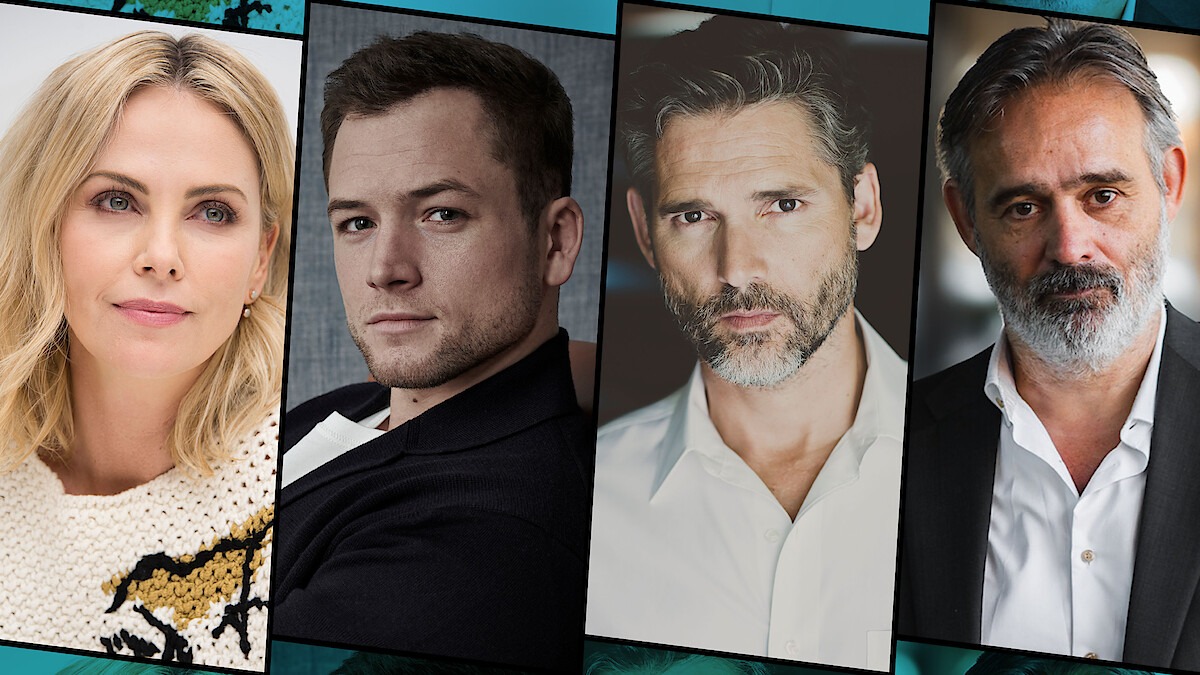Charlize Theron and Taron Egerton’s Apex has left many viewers with mixed emotions, especially after watching how the final events played out. What began as a high-stakes thriller gradually turned into something deeper, exposing the human condition through intense character-driven moments.
With so many twists and emotionally layered performances, particularly from Theron and Egerton, it is no surprise that people are eager to break down what the final scenes really meant. Rather than ending things with clear answers, Apex leaned heavily on symbolic visuals and tension-driven silence that spoke volumes without saying much.
From the very beginning, the film made it clear that it wasn’t going to be your typical action-packed shooter. It presented a clash of ideology and personal trauma, woven into a survival mission on unfamiliar terrain.

Charlize Theron’s role as Lena was more than just a hardened fighter; she embodied someone who had lost everything yet still carried a sense of control over her circumstances.
On the other hand, Taron Egerton’s character, Kellen, represented a generation forced to live in the shadows of choices they didn’t make. Their dynamic was filled with both admiration and unease.
As the film advanced, the bond between the two became the emotional centre, drawing the audience into a layered exchange of trust and betrayal. Both characters found themselves forced to confront memories they had buried deep.
The moments of silence between them did more to convey pain than any words could offer. And when the final act arrived, the consequences of everything they’d endured became harder to ignore.
The Build-Up That Led to a Test of Conviction
The turning point came once the opposing factions on the Apex compound began pushing harder against Lena and Kellen’s defences. It wasn’t just a matter of who had the most ammunition or strategy, but which side would break under pressure first.
Lena remained focused on the mission while Kellen started to question the motivations behind it all. Viewers could sense that his mind was somewhere else, weighed down by the memories of people he couldn’t save.
A major scene involved Kellen discovering confidential footage that contradicted everything he was told at the beginning of the assignment. This moment planted doubt in him, making him confront the idea that maybe he had been on the wrong side all along.
Theron’s Lena didn’t speak much during this section, but her body language reflected someone who had already come to terms with those same doubts. Instead of forcing her perspective on Kellen, she waited for him to reach his own conclusion, which added to the tension between them.
Their uneasy alliance began to show cracks as pressure mounted, but it never crumbled completely. That subtle respect between the two characters, even during disagreements, carried weight. It became evident that neither one could succeed without the other, even if they no longer shared the same belief in the mission.
A Moment of Choice and the Consequences That Followed
As the compound’s security collapsed, Lena and Kellen reached the control room that held the master switch to end the Apex protocol. Here, the film introduced a moral dilemma. Shutting down the system would stop the artificial intelligence managing the deadly simulations, but doing so would also result in the deaths of others still caught in the loop.
The argument that followed between Lena and Kellen didn’t play out like a typical shouting match. Instead, it was quiet and painful, filled with years of loss and regret surfacing in a few deliberate sentences.
Kellen insisted that continuing the program would only produce more trauma. He believed stopping it was the only way to reclaim some kind of justice, even if it meant collateral damage. Lena, hardened by her own history, feared that stopping the system would give the enemy an advantage.
It was clear she had lost people to this cause and didn’t want those sacrifices to be wasted. The two perspectives made the decision feel heavy, and neither side came across as entirely right or wrong.
Eventually, Lena stepped aside and allowed Kellen to make the final call. That single moment, where she handed him the access code without speaking, was more impactful than any explosion the film could have shown. It symbolised a trust that went beyond shared goals—it was an admission that sometimes survival requires surrendering control.
What the Ending Revealed About Each Character’s Journey
When the screen faded into the final moments, Kellen was shown walking through the ruins of the compound while the Apex system powered down behind him.
There was no victorious music or celebratory expression on his face. Instead, he looked tired, broken even, as if he had won something but lost too much in the process. That image alone suggested that peace, if it came at all, would be temporary and fragile.
Lena’s absence from the last scene raised plenty of questions. Though the film never confirmed whether she survived, many clues pointed to the idea that she chose to stay behind deliberately.
Whether it was to hold off incoming enemies or to ensure the shutdown succeeded, her sacrifice served as a final act of responsibility. It reminded viewers that her purpose had always been tied to the larger fight, even when the mission no longer made sense.
The film didn’t give a tidy conclusion or promise future stability. Instead, it offered a reflection of what these characters had to give up to restore a bit of hope.
It challenged the idea of what it means to survive, especially when survival doesn’t guarantee healing. Both Theron and Egerton delivered performances that allowed viewers to feel those burdens without the need for grand declarations.
How Visuals and Sound Helped Shape the Final Mood
What gave the final stretch its intensity wasn’t just the dialogue or the plot twists. The director leaned heavily on visuals that mirrored emotional states.

Flickering lights, long shadows, and quiet, lingering shots all worked together to create a tone of isolation and doubt. Even the score, reduced to minimal tones and ambient sounds, reflected the internal battles the characters were dealing with.
This style of filmmaking suited the themes perfectly. The quiet moments didn’t feel empty—they echoed with the consequences of earlier choices. As Kellen walked away from the wreckage, the camera didn’t follow him closely.
Instead, it stayed back, suggesting that not all journeys need to be fully observed to carry weight. That distance created a sense of respect for what had just happened, and it left enough space for the audience to think about what might come next.
Why the Ending Left Viewers Divided
Plenty of people left the theatre with questions, and that seems to be exactly what the creators wanted. Instead of spelling things out, the final sequence allowed for multiple interpretations. Some saw it as a tragic goodbye, while others believed it marked a new beginning. That flexibility might frustrate viewers looking for concrete answers, but it also encouraged discussion and reflection.
Theron and Egerton gave viewers characters who felt like they had lived full lives long before the film even began. Their choices, mistakes, and brief moments of clarity made the ending feel personal. It wasn’t just about winning or losing—it was about making peace with what couldn’t be changed.
Apex refused to follow familiar storytelling paths. It asked its audience to stay patient, to read between the lines, and to feel the weight of each silence. By the time the credits rolled, it became clear that the film didn’t want to provide comfort. It wanted to remind viewers that not every resolution is clean, and sometimes the hardest part is choosing when to let go.
This kind of conclusion may not suit every audience, but for those who stayed with it, Apex offered something raw and thoughtful. It focused on people rather than events, and on emotions rather than spectacle. Through the actions of Lena and Kellen, it highlighted how even small moments of understanding could mean more than any battle ever fought.
(Updated: Jun 17, 2025)



